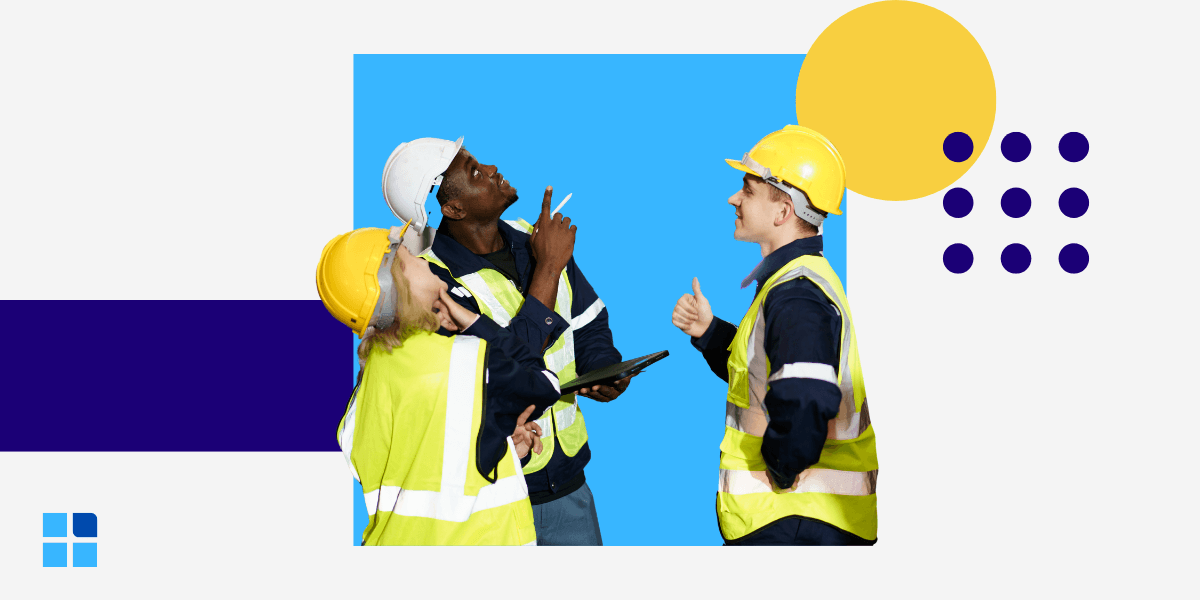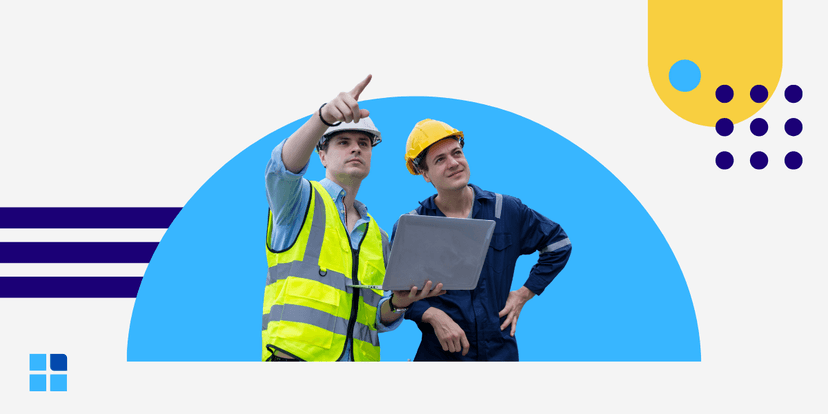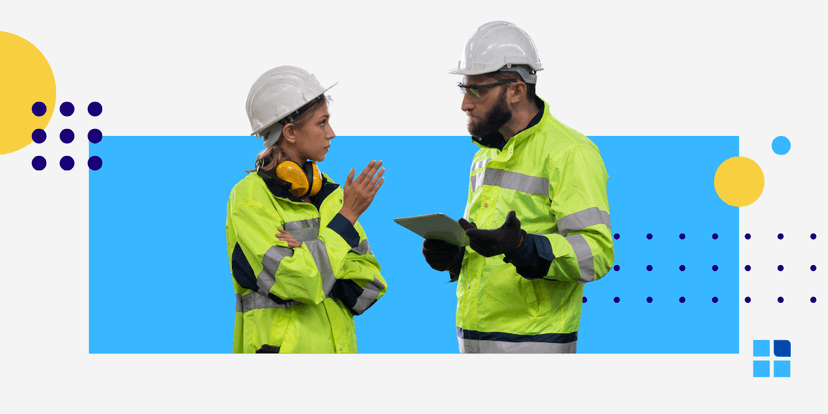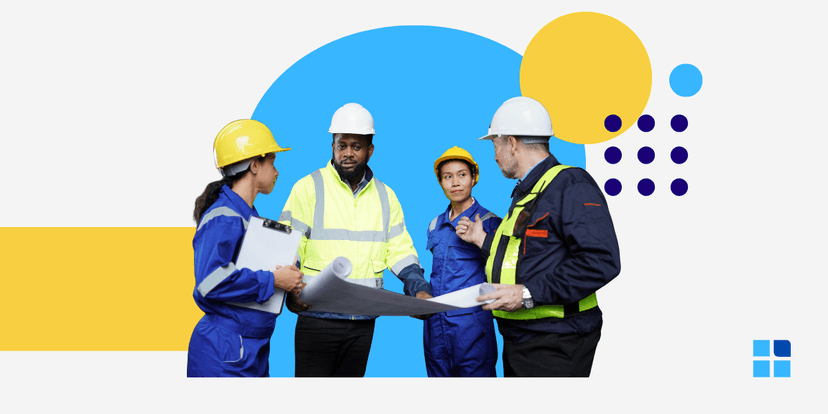Effective leaders know the value of staying connected to the frontlines. One powerful strategy to achieve this is to “walk the Gemba,” a term derived from Japanese manufacturing that means to visit the real place where work is done. This practice not only allows leaders to gain firsthand insights into operations, but also fosters a culture of continuous improvement.
In this blog post, we’ll explore the essentials of how to walk the Gemba, revealing how this approach can transform your leadership style and enhance organizational performance.
What does it mean to walk the Gemba?
Gemba is a Japanese word that means “the real place.” So, to “walk the Gemba” means to visit the real place where work is being done, which is typically on the factory floor or in any environment where value is created.
A Gemba walk is a fundamental part of the Lean management philosophy and involves leaders and managers immersing themselves in the operational setting to observe processes firsthand, engage with employees, and understand the intricacies of daily operations. As a result, team leaders can gain valuable insights into the inner workings of their organization, identify areas for improvement, and foster a culture of open communication and collaboration.
This hands-on approach enhances the leader’s understanding of the operational challenges and successes, and empowers employees by giving them a voice in shaping effective solutions.
The benefits of conducting a Gemba walk
Conducting a Gemba walk provides numerous advantages for organizations looking to enhance operational efficiency and foster a culture of continuous improvement. The key benefits of conducting a Gemba walk are:

1. Improved process understanding
Gemba walks allow you to observe operations directly where they happen. This, in turn, enhances your understanding of the processes, workflows, and challenges faced by frontline employees. By witnessing the real-time dynamics of the workplace, you can identify inefficiencies and areas for improvement more effectively.
2. Enhanced employee engagement
Engaging with employees when you walk the Gemba fosters open communication and trust. In other words, employees feel valued and empowered when you take the time to listen to their insights and suggestions. This engagement boosts morale and encourages employees to actively participate in problem-solving and process improvement initiatives.
3. Identification of waste
Gemba walks help in identifying the seven types of waste (TIMWOOD) in Lean management: Transport, Inventory, Motion, Waiting, Overproduction, Overprocessing, and Defects. By observing these inefficiencies in person, you can prioritize and implement targeted project improvements to eliminate wasteful activities and streamline operations.
4. Encouragement of a continuous improvement culture
Regular Gemba walks reinforce the importance of continuous improvement within your organization. By making these walks a routine practice, you demonstrate your commitment to fostering a culture where continuous improvement and optimization are valued. Consequently, this encourages employees to adopt a similar mindset and continuously seek ways to enhance productivity and efficiency.
5. Better decision-making
The insights gained from Gemba walks enable you to make informed, data-driven decisions. By understanding the intricacies of daily operations and employee experiences, you can implement strategic changes that align with your organization’s goals and objectives.
6. Strengthened leadership presence
Gemba walks provide you with a visible presence on the shop floor or in the workspace. As a result, this reinforces your accessibility and approachability which helps to build stronger relationships with employees. In short, if you are actively involved in understanding and addressing operational challenges, you are more likely to gain respect and support from your teams.
7. Discovery of innovative solutions
By engaging with employees and observing their actual work process, you can uncover innovative solutions and ideas that may not have surfaced otherwise. Employees who are directly involved in processes often have valuable insights and creative suggestions for improvements. Gemba walks create an opportunity to harness this collective knowledge and drive innovation within your organization.
Streamline processes and achieve operational efficiency
Walk the Gemba effectively with these seven steps
Performing an effective Gemba walk involves a structured approach that emphasizes observation, engagement, and reflection. Here are seven steps you should follow to gain valuable insights into operations, foster a culture of continuous improvement, and drive meaningful organizational change:

1. Define the purpose
Before embarking on a Gemba walk, it is crucial to clearly define the purpose and objectives. In other words, determine what specific areas you want to observe and understand. For example, efficiency, safety, or employee engagement. Having a clear purpose helps focus your observations and ensures that the walk is aligned with organizational goals.
2. Plan the walk
Conduct Gemba walks at a time that minimizes disruption to the normal workflow. Inform the relevant teams and departments of your visit to ensure transparency and foster a collaborative atmosphere. Additionally, plan and decide on the route and specific areas to visit, which should align with the defined purpose.
3. Engage with employees
During the Gemba walk, engage with employees by asking open-ended questions about their processes, challenges, and suggestions for improvement. Listen actively and show genuine interest in their perspectives. This interaction provides valuable insights and empowers employees by involving them in the improvement process.
4. Observe without interfering
As you walk through the workplace, observe processes and workflows without interfering. Take note of how tasks are performed, identify any bottlenecks, and assess the flow of work. Essentially, the goal is to gain a firsthand understanding of the current state without disrupting operations.
5. Take detailed notes
Log observations meticulously. For instance, note any areas of concern, potential improvements, or standout practices. This documentation is essential for later analysis and decision-making. Furthermore, include both qualitative observations and quantitative data when possible.
6. Reflect and analyze
After you walk the Gemba, take the time to reflect on your observations and analyze the information collected. Identify patterns and root causes of any issues observed, and consider potential solutions or improvements. This reflection is a critical step in translating observations into actionable insights.
7. Follow-up and implement changes
Share your findings with the relevant teams and collaborate on developing an action plan to implement changes. In addition, follow up on the progress of these changes and provide support where necessary. Continuous follow-up ensures that improvements are sustained and that the Gemba walk leads to tangible benefits.
The importance of a Gemba walk Checklist
A Gemba walk checklist is a structured tool used by leaders and managers to guide their observations and interactions during a Gemba walk.
The purpose of a Gemba walk checklist is to ensure that the walk is focused and productive. Therefore, allowing leaders to systematically assess the actual work environment, processes, and challenges faced by employees on the production floor or within the workspace.
Preparing a Gemba walk checklist in advance is crucial as it helps leaders identify specific areas of interest or concern, align their observations with organizational goals, and facilitate meaningful engagement with employees.
By having a clear set of questions or topics to explore, leaders can maintain focus and ensure they gather comprehensive insights that contribute to continuous improvement.
Essential Gemba walk checklist questions
When conducting a Gemba walk, it’s essential to have a set of structured questions that guide your observations and interactions. Some examples of Gemba walk checklist questions to ask include:
- What is the purpose of this process?
- Understand the overall goal and ensure alignment with organizational objectives.
- Are there clear standard operating procedures in place?
- Determine if processes are standardized and followed consistently by employees.
- What challenges or bottlenecks do employees face in their daily tasks?
- Identify obstacles that hinder productivity and efficiency.
- How is the workflow organized, and is it efficient?
- Assess the flow of work and look for opportunities to streamline processes.
- Are there any visible signs of waste (e.g., excess inventory, waiting times)?
- Observe for any of the seven types of waste in Lean management.
- How do employees communicate with each other and with other departments?
- Evaluate the effectiveness of communication channels and collaboration.
- What safety measures are in place, and are they being followed?
- Ensure that safety protocols are adhered to and identify potential risks.
- Are employees aware of performance metrics and targets?
- Check if employees understand how their work contributes to overall goals.
- What suggestions do employees have for improving the process?
- Encourage input and ideas from employees who are directly involved in the process.
- How is quality ensured at each step of the process?
- Identify quality control measures and address any gaps.
- Are there any training or development needs among employees?
- Determine if additional skills or knowledge are required to improve performance.
- Is the equipment well-maintained and functioning properly?
- Assess the condition and maintenance of tools and equipment.
The dos and don'ts when you walk the Gemba
To maximize the benefits of a Gemba walk, it’s essential to approach it with the right mindset and techniques. The following are the key dos and don’ts to consider when you walk the Gemba:

Dos
- Do prepare in advance
- Clearly define the purpose and objectives of the Gemba walk.
- Inform and involve relevant teams and departments about your visit.
- Plan a route and select specific areas to observe that align with your objectives.
- Do observe actively
- Focus on understanding the processes, workflows, and challenges faced by employees.
- Take detailed notes on observations, including both qualitative insights and quantitative data.
- Do engage with employees
- Ask open-ended questions to gather insights into their processes and challenges.
- Listen actively and show genuine interest in employees’ perspectives and suggestions.
- Do get a second vantage point
- It might be a good idea to have someone with totally different daily tasks on the Gemba walk with you
- People who are less familiar with the processes usually have a fresh perspective and ask different questions that you may never ask
- Do follow up and implement changes
- Post Gemba walk, share findings with relevant teams and collaborate on developing an action plan.
- Provide support and follow up on the progress of changes to ensure sustained improvements.
- Do be respectful and supportive
- Approach employees with respect and appreciation for their work.
- Encourage a culture of openness and trust by valuing employees? contributions.
Don'ts
- Don’t interrupt or disrupt
- Avoid interfering with employees? work during the Gemba walk.
- Respect the normal workflow and observe processes without causing disruptions.
- Don’t jump to conclusions
- Resist the urge to make immediate judgments based on initial observations or suggesting changes during the walk
- Take time to gather complete information and understand the full context before drawing conclusions and creating solutions
- Don’t focus on the people
- The purpose of a Gemba walk is to observe and learn, not to micromanage or control employees’ work.
- Focus on the process and gaining insights rather than dictating changes on the spot and pointing fingers
- Don’t ignore employee input
- Avoid dismissing employees’ insights or suggestions as unimportant.
- Encourage open communication and acknowledge the value of employees? ideas.
- Don’t forget to document
- Do not overlook the importance of documenting observations and findings.
- Maintain a comprehensive record for later analysis and decision-making.
- Don’t forget to follow up
- Failing to follow up on identified issues or suggested improvements can lead to disengagement.
- Ensure that there is a clear plan for implementing changes and provide ongoing support.
Leveraging technology for Gemba walk efficiency
Incorporating technology, such as a virtual Gemba walk app like LeanSuite’s Gemba Walker, can significantly enhance the efficiency and effectiveness of your Gemba walks.
These digital tools enable real-time communication and collaboration among team members, allowing for seamless documentation of observations, issues, and improvement opportunities. With features like custom checklists, dynamic templates, and the ability to capture photos and notes, you can thoroughly document findings directly from the Gemba. This not only saves time, but also ensures that key observations and insights are accurately recorded and easily accessible for further analysis.
By leveraging such advanced technology, you can optimize your operational efficiency, quickly identify areas for improvement, and implement effective solutions to drive sustainable growth and performance.







